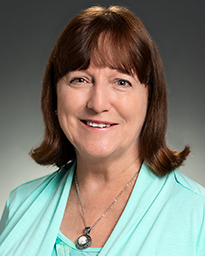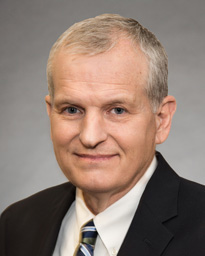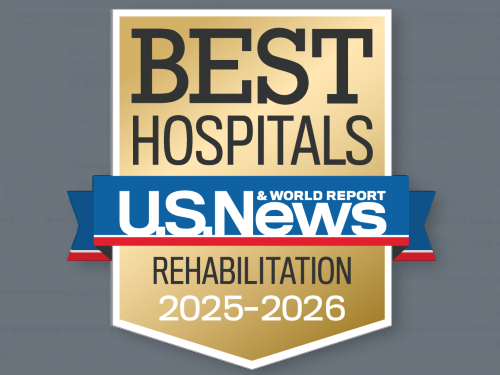When we look in the mirror, we’re used to seeing a familiar face and body, but after amputation or disfiguring injury, the reflection in the mirror is not the person we know.
 “Nurses are trained in the medical treatment of patients with limb loss, but most have not been trained in how to be comfortable offering a patient the opportunity to view their new body image, in private, and be supportive during that healing step,” says Becky Thayer, MSN, RN, CRRN, project manager for evidence-based practice in nursing administration.
“Nurses are trained in the medical treatment of patients with limb loss, but most have not been trained in how to be comfortable offering a patient the opportunity to view their new body image, in private, and be supportive during that healing step,” says Becky Thayer, MSN, RN, CRRN, project manager for evidence-based practice in nursing administration.
To help change the paradigm, Thayer and her co-investigators used a TIRR Memorial Hermann Rehabilitation Innovation Grant to conduct a study on the topic. Their findings were published in the May 2020 issue of Clinical Nurse Specialist.1
“Often the first time a limb loss patient sees herself or himself after surgery is in the big mirrors in the therapy gym, and other people may be there,” Thayer says. “We think it’s important for patients to have private time to visualize themselves as they are, in the moment, and become familiar with their ‘new me.’”
Thayer and her colleagues were awarded the $10,000 grant to determine if an online teaching platform about a sensitive topic could successfully strengthen nurses’ confidence in supporting a patient in mirror viewing after a disfiguring event. To begin the study, 25 TIRR Memorial Hermann nurses took an online survey to assess their knowledge and feelings about helping patients with limb loss look at themselves in the mirror for the first time.
To create a video as part of the program to educate nurses, Thayer partnered with Wyona Freysteinson, PhD, associate professor of nursing at Texas Woman’s University in Houston, and Lisa W. Thomas, DNP, APRN, ACNS-BC, CRRN, NEA-BC, former TIRR Memorial Hermann employee and an assistant professor at Cizik School of Nursing at UTHealth. Study participants watched the video, which featured interviews with limb loss patients talking about their experience looking in the mirror after amputation, and sharing their thoughts on how medical staff could prepare them for what they saw.
“Immediately after the nurses watched the video, we conducted a discussion to gather their feedback, which led us to believe that a sensitive program like this could be successful for nurses using an online platform,” Thayer says.
Funds from the grant were also used to purchase full length and handheld mirrors for each unit at TIRR Memorial Hermann. A survey conducted a month later showed that the nurses were more comfortable supporting a patient if the patient asked the nurse to help them look in a mirror after an amputation.
“Although this study was for limb loss, I envision the program being used for other patients at TIRR whose physical appearance has been altered,” Thayer says.
The TIRR Memorial Hermann Innovation Grant was established to support innovative rehabilitation research and the hospital’s research mission. TIRR facilitates research that will improve the lives of rehabilitation patients worldwide. Thayer was awarded her grant in 2018.
 “This is a great achievement – just the sort of thing our innovation grants are meant to support,” says Mark Sherer, PhD, ABPP, FACRM, associate vice president for research at TIRR Memorial Hermann and a clinical professor of physical medicine and rehabilitation at McGovern Medical School at UTHealth and at Baylor College of Medicine. “Becky began with limited research expertise but with determination and some good help from others, she completed a great project.”
“This is a great achievement – just the sort of thing our innovation grants are meant to support,” says Mark Sherer, PhD, ABPP, FACRM, associate vice president for research at TIRR Memorial Hermann and a clinical professor of physical medicine and rehabilitation at McGovern Medical School at UTHealth and at Baylor College of Medicine. “Becky began with limited research expertise but with determination and some good help from others, she completed a great project.”
In addition to the article in Clinical Nurse Specialist, Thayer presented her findings at the 2019 Association of Rehabilitation Nurses national conference. Since the initial grant, the study has been expanded to Memorial Hermann Southeast Hospital and Memorial Hermann Pearland Hospital.
“We plan to roll it out at all Memorial Hermann Rehabilitation Network sites and hope to extend our reach to other rehabilitation hospitals as well,” she says. “We also think it may be applicable in other hospital settings, and plan to disseminate it to nursing educators in acute care.”
1Thayer B, Freysteinson W, Thomas LW. Transforming the Experience of Mirror Viewing for Individuals Face with Disfiguring Injuries. Clinical Nurse Specialist. 2020 May;34(3):132-136.
